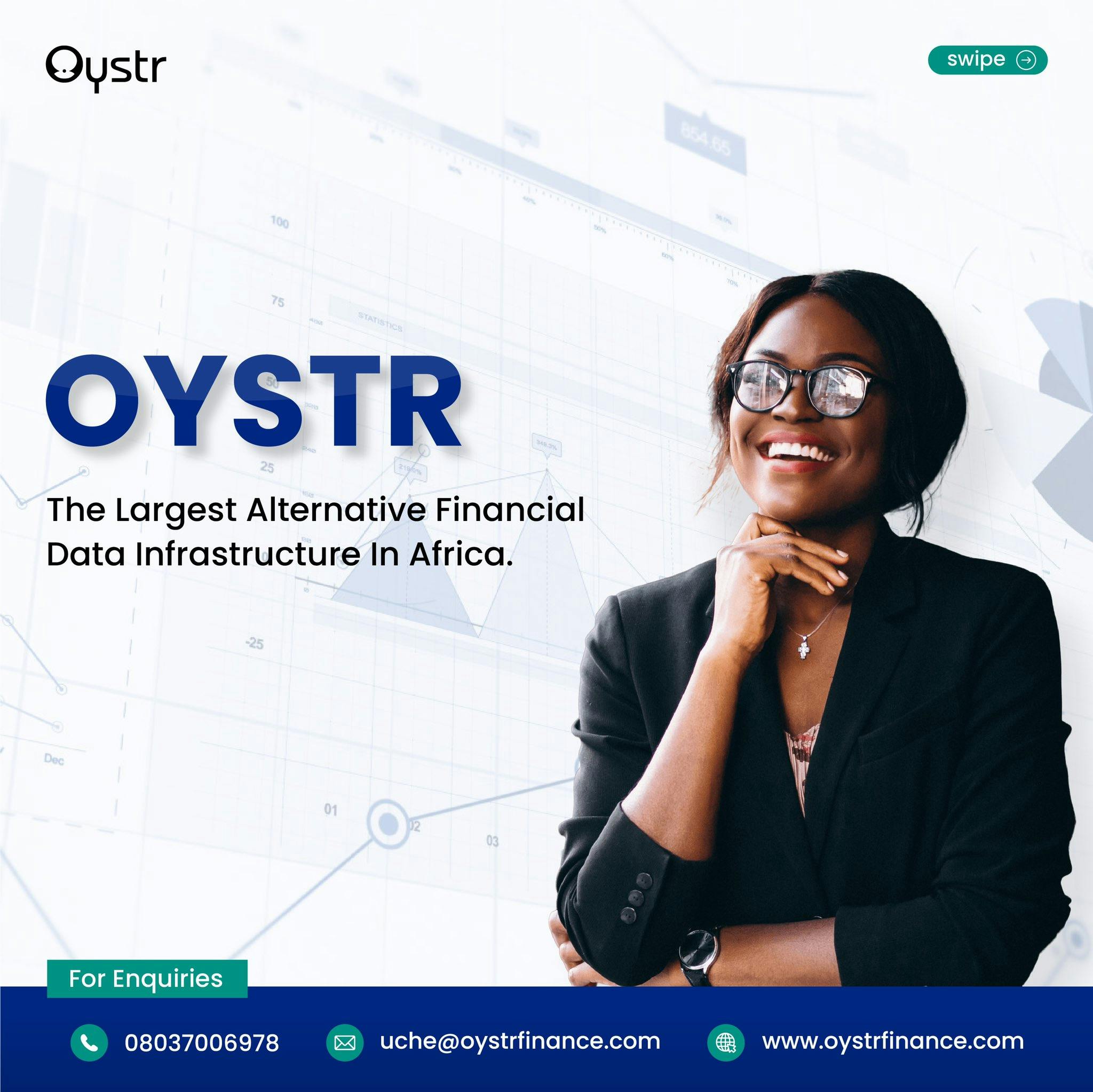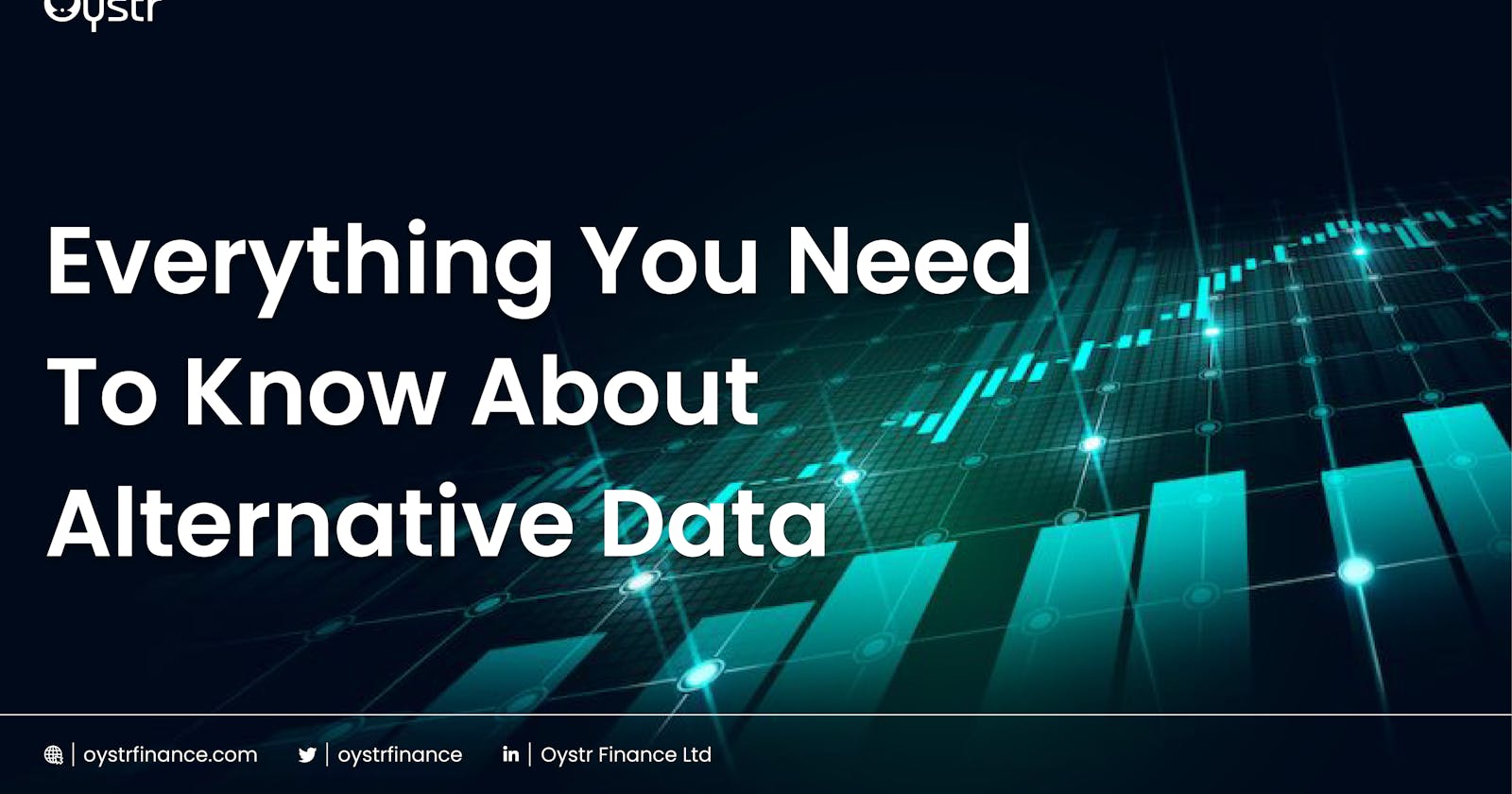Everything You Need To Know About Alternative Data
Understanding Alternative Data
Data is an essential phenomenon in the finance industry. However, the way we derive accurate financial data is changing as technology evolves. Alternative data is an emerging field with relevance to the finance industry. It is generated by non-traditional sources and often has a lower exchange rate than traditional data due to its newness and difference in structure.
These alternative data sets can be more of a challenge to work with than traditional forms of data as they are often not easily accessible or structured.
With so much new technology, there's never been a better time to seek out alternative datasets that can help you achieve greater insights into customer behavior and create a better experience.
As more and more financial institutions tilt towards leveraging alternative data, there's a need to know more about it.
In this article, we'll decipher what alternative data is about, why financial institutions need it, and how it influences financial inclusion in Africa.

What Is Alternative Data?
Alternative data is non-conventional data that can indicate a firm's future performance other than typical sources such as corporate filings, broker forecasts, and management guidance.
The term "alternative data" refers to anything the fund management sector has not traditionally used in its decision-making processes, including mutual funds, pension funds, and hedge funds. Algorithmic traders, sometimes known as quants, are the most common alternative data users.
These traders use the data to build computer models that they use to trade various assets, with equities accounting for most of their trades. As a result, there has been a huge increase in the number of alternative data sources during the last ten years.
Although traditional data sources like financial statements, presentations, SEC filings, sales numbers, and so on are useful, they rarely provide a complete and up-to-date picture. So before deciding where to place their money, investors in today's data-driven market want more information.
This helps in pre-trade investment analysis and assists investors in making smarter decisions.
Many businesses have moved fast to gather, clean, analyze, and interpret usable data from non-traditional sources. It is typically collected from credit card transactions, sensors, social media feeds, email receipts, retail sales, web traffic, mobile devices, satellites, public papers, and other non-traditional sources.
Why You Need Alternative Data
The demand for rich and accurate real-time information has grown. As a result, several industries, including the finance industry, have discovered the essence of leveraging alternative data in financial decisions.
Several industries use alternative data to make smarter decisions, as it validates databases, provides remarkable insights, and more. For example, these new datasets enable financial organizations to contact previously unbanked people and untapped markets at a reduced cost.
Here are a few reasons your organization needs to leverage alternative data.
Credit Risk Analysis/Alternative Credit Scoring
Certain data and information are inaccessible to financial firms due to funding limits. Those not part of the banking system, alongside individuals regarded as underserved in general, frequently lack access to loans and other financial products. As a result, financial institutions often risk providing credit services to unbanked and underserved communities.
The customer's payback history, credit dues, outstanding liabilities, and traditional credit score are all considered during the conventional credit approval process. This process is used by financial institutions such as banks to determine a client's creditworthiness.
However, the system automatically excludes unbanked individuals and businesses since their credit history information is insufficient in the system's database. As a result, they become credit invincibles and search for credit or loans through unscrupulous means.
With alternative data, Fintechs like Oystr Finance can develop an alternative credit score for the credit invincibles, or unbanked, using datasets such as utility payment histories, mobile phone bills, rent payments, consumption habits, and so on.
Financial institutions can profit from the clarity provided by alternative data insights, which shed light on financial sector customer behavior and enable the construction of reliable predictive risk models.

Meet KYC Requirements
Alternative data, in addition to credit, help the financially vulnerable build and verify their identities. Know Your Customer (KYC) requirements are obligatory for banks and other financial institutions.
However, those without bank accounts have no way of accessing these services. This severely limits the effectiveness of activities like account opening, which provides unbanked people access to financial services.
Financial service firms can meet KYC requirements, verify customer identities, and offer more cost-effective services by utilizing alternative data sources, such as public domain data.
To gain access to specific financial services, individuals and organizations often.
When an insurance firm makes use of alternative data, it gains entry to previously unavailable datasets that can provide valuable insights and new pieces of operational data. So, they can examine the customer and their need for insurance more accurately.
Identify Untapped Markets
Banks, fintech companies, and other financial institutions can leverage alternative data to reach previously underserved individuals and businesses.
You can locate and attract these underserved subsets of consumers by leveraging alternative data. According to an Accenture Ovsurvey, financial institutions in emerging markets that fail to capitalize on the opportunity given by the unbanked and underbanked stand to lose $380 billion.
Funding might be difficult or impossible for SMEs, which is a significant barrier. In addition, many SMEs struggle to submit the standard documentation that banks and investors usually want when seeking finance.
Alternative data could be used to build financial identities for their businesses. For example, governments and investors can utilize alternative data to evaluate applications and give funding. It enables them to expand small businesses, obtain access to traditional financial services, and stimulate the economy. It indicates that by utilizing alternative data, financial companies may be able to strike a balance between profit-making and doing good.

Financial Inclusion and Alternative Data
Financial inclusion is one of the seventeen United Nations Sustainable Development Goals (SDGs). Furthermore, seven of Africa's seventeen SDGs have been identified as benefiting from its implementation, according to experts. Currently, over 2.5 billion persons worldwide are financially excluded due to a lack of access to formal banking services. In addition, approximately 95% of Africa's working-age population lacks access to financial services.
Even though these figures only provide a limited view of the global financial inclusion state, they underscore the importance of focusing efforts on reaching the most vulnerable people. As a result, governments worldwide are devising new strategies to promote a more equitable economic environment.
Alternative data has been determined to be critical to improving financial inclusion. As a result, governments, banks, and fintech firms are investigating ways to use it to expand and serve the unbanked.
Data-driven tactics are more likely to produce results than emotionally motivated ones. Using alternative data is a key pillar of financial inclusion policy and strategy. Cellular adoption and the use of alternative data are viewed as important intensifiers for driving national inclusion. As a result, numerous countries are starting to leverage non-traditional data sources such as bank records, receipts, and utilities and telecommunications records.
When obtaining information on the demand for and provision of financial services for the excluded, policymakers can benefit from alternative data and analytics. Spending, income, culture, and population statistics are all examples of "demand-side" data.
The World Bank collects demand-side data on financial services interactions in almost 150 countries through its Financial Inclusion Index (FINDEX) to support national strategies, policies, and laws for inclusion. As a result, alternative data plays an essential role in providing financial access for all.

Frequently Asked Questions on Alternative Data
Here are some frequently asked questions (FAQs) on the use of alternative data
Is Alternative Data Safe?
Validated alternative data are as reliable as traditional data, if not more. Furthermore, infrastructures are in place that analyze these datasets before transmitting them and include them in machine-learning models. Therefore, organizations using verified alternative data will have trustworthy information.
Where Can I Access Alternative Data?
Raw alternative data is scored from mobile money, agents, social media, retail purchases, and utility payments, among other sources. As a financial institution, it is safer to derive the analyzed data from alternative data providers like Oystr Finance.
Does Alternative Data Infringe on People's Privacy Rights?
No, consent from the customer is typically required before any third party can access personal information.
All alternative data come from reliable sources and are collected with the permission of individuals and companies. Worldwide, there are strict requirements from authorities to protect the privacy of users' information.
Is Alternative Data Expensive?
On the contrary, alternative data is cheaper than traditional data. You'll only pay for the data provided when using a good alternative data provider.
Start using alternative data to reach more customers, serve more customers, make smarter decisions, and close the financial inclusion gap. Oystr Finance is Africa's largest alternative data provider, providing accurate data to help serve the unbanked. Visit our website to get started today.

